Here today, gone tomato: The return of tomato frogs to terrarium science
The tomato frogs of Madagascar are some of the most striking semi-fossorial frogs on the planet. Characterised by plump, red/orange bodies and wide eyes, these Anurans of the genus Dyscophus have seen bouts of popularity in captive collections. Since Malagasy government stopped legal exports in 2019, the availability of tomato frogs plummeted due to the fact they are notoriously difficult to breed without intrusive hormone procedures. Now, hobbyists across Europe are starting to unravel the mysteries behind breeding these charismatic frogs. We caught up with Misa Kralova, a breeder from the Czech Republic to learn the secrets of breeding these frogs.
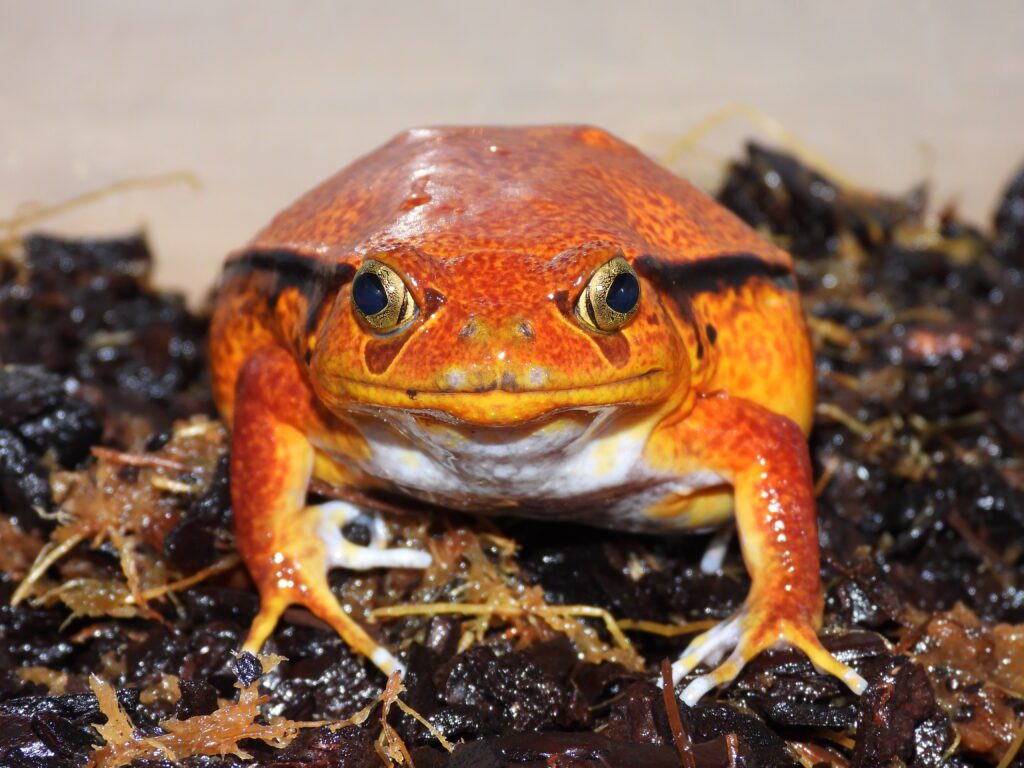
The tomato frog genus- Dyscophus
The Dyscophus genus is made up of three species. The “true” tomato frog (Dyscophus antongilii), the “false” or Sambava tomato frog (D. guineti) and the Antsouhy tomato frog (D. insularis). All three species are closely related but have distinct morphological differences. D. antongilii is the most vibrant of the three. It typically has uniform bright orange or red colouration. It is found in the Eastern rainforests of Madagascar, stretching from Andasibe, northwards. The false tomato frog has the smallest distribution of the three species and in some regions, is sympatric with D. antongilii. It is easily distinguishable by the lateral stripes that run from the animal’s eyes down its torso. False tomato frogs are generally also less vibrant in colouration with more yellowish-brown tones. Finally, Dyscophus insularis is found in western Madagascar and is thus, more adapted to drier habitats where it can be found localised to marshes and streams. Its appearance is similar to both other species, possessing patterning like guineti but more striking colouration like antongilii.
All species are plump, semi-fossorial frogs that are finely tuned to seasonal rains. They are archetypal Microhylids and feed on a wide range of invertebrates. Their semi-fossorial habits made them a once-popular species of frog. However, these animals soon met their competition in the form of horned, or “pacman” frogs (Ceratophrys cranwelli). Both species breed far more successfully with the administration of hormones, something that many hobbyists did not have access to. The “pacmans” were bred in large numbers on farms in Taiwan and the USA, where the humble tomato frogs were generally exported and infrequently bred in captivity. This meant that when Madagascar banned all commercial exports, the Pacman frogs were far more widely available, diminishing the tomato frog’s exposure and demand.
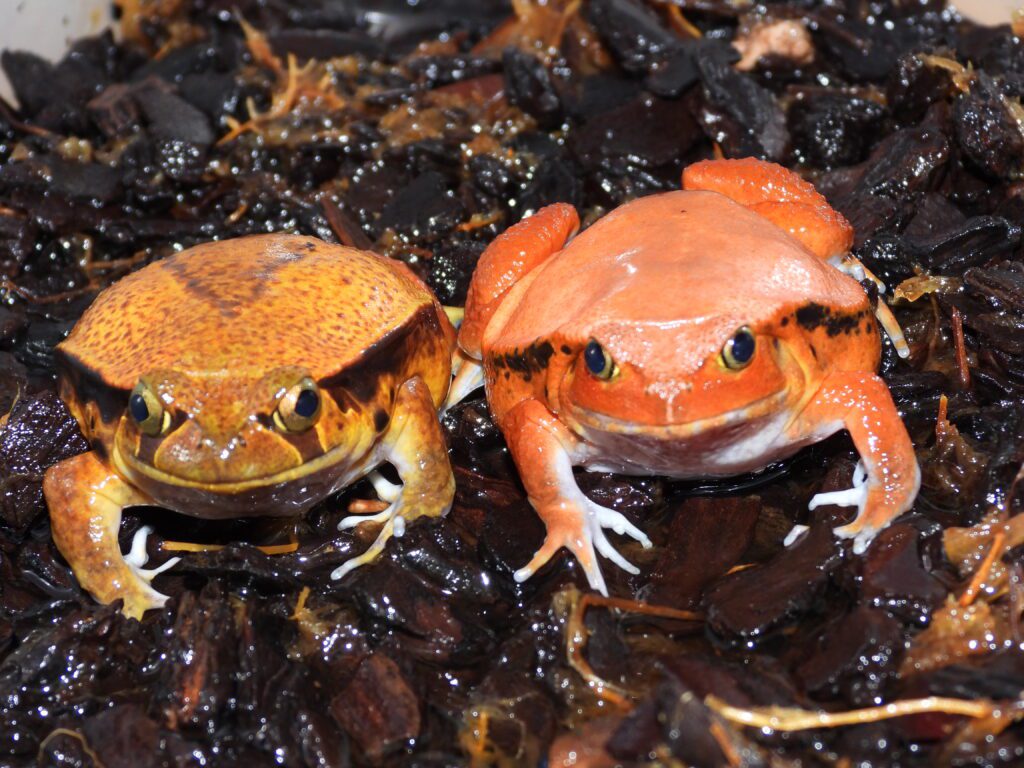
Breeding tomato frogs
“I have a personal connection to these frogs,” said Misa, who has been working with Dyscophus since 2015 and bred the false tomato frog (D. guineti) with hormones in 2017. “It’s quite normal that people will use hormones to breed difficult frogs, but I personally felt ashamed when I did, back in 2017. I didn’t think it was that ethical. Some of the animals would die from time to time and while I don’t think this was a direct result of the hormones, you do have to use quite large doses and it just didn’t feel right.”
Misa had previously managed to encourage the frogs into amplexus naturally but unfortunately never received any eggs. Her colleague also managed to get 10 pairs of frogs into amplexus by transferring them outside during a storm, but again, never received any eggs. Eventually, Misa found that one fundamental change to her husbandry practice changed her success rates.
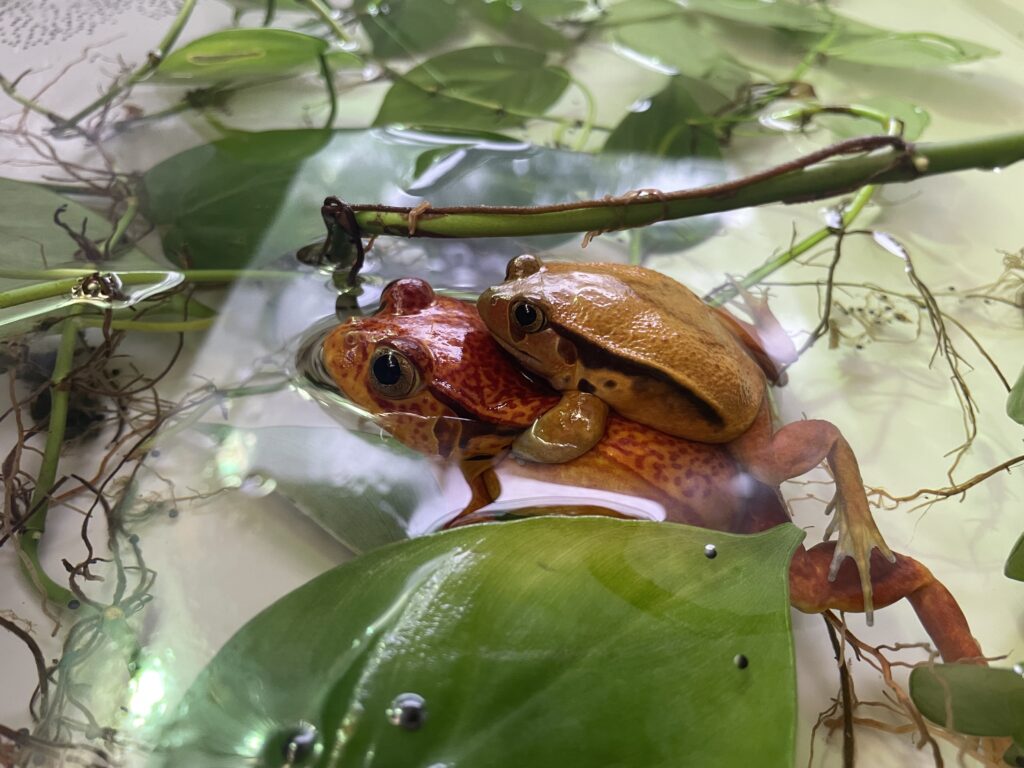
The importance of diet
Originally, Misa’s frogs were fed almost exclusively on gut-loaded, vitamin-dusted crickets with occasional feedings of dubia roaches. “They like the crickets, they strike on them and eat them easily,” she said. “But, these frogs spend a lot of their time buried and become more active at night and after rain. They’re also chubbier than a lot of other frogs so I started to think, surely they should be fed chubbier foods. That’s when I made the switch to earthworms.”
Misa continued: “You can see in the faeces, it’s much drier with bits of legs and things when fed crickets, but it looks healthier when the frogs are fed soft-bodied prey, so I think the frogs are using it differently.”
Misa now feeds her adult and subadult tomato frogs twice a week and almost exclusively on earthworms and snails with their shells removed. However, she has noticed that there is a great deal of variability between the dietary preferences of the adults and the juveniles. “The babies will strike at crickets like crazy, but they aren’t too interested in earthworms” she explained. “It’s not until they reach about 4 or 5cm that they will eat earthworms. As they grow, they begin to feed more aggressively and will fit as much as they can in their mouths. Because of this, I feed my tomato frogs in water, rather than on their usual substrate.”
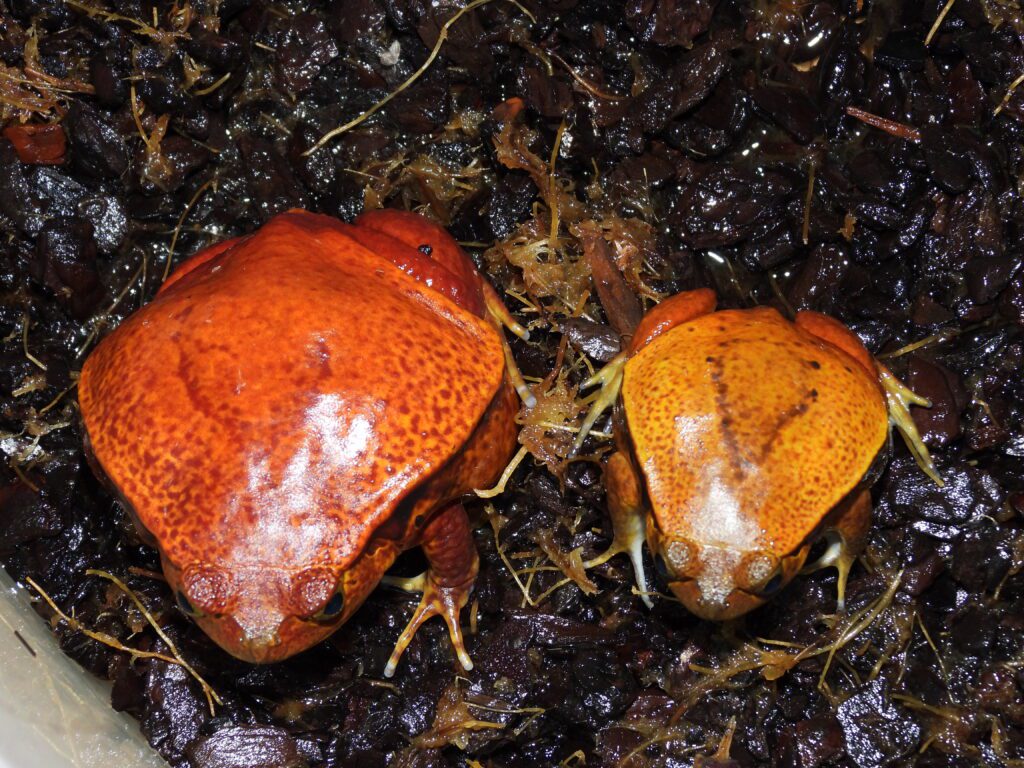
General husbandry and breeding
Tomato frogs are reasonably straightforward to care for and require very similar care to Pacman frogs. A low-wattage UVB bulb above a reasonably humid glass enclosure with a few inches of natural blend substrate and a water bowl will meet the most basic requirements of this species. Tomato frogs require a similar setup and environmental parameters to Pacman frogs. However, they will benefit from slightly increased humidity and more space and décor to explore.
Tomato frogs are best kept at around 23 – 27°C with an ambient humidity of 60 – 70%. However, it can be beneficial, particularly for “true” tomato frogs (D. antongilii), to provide cooler, drier periods in the winter. Nighttime temperatures should also drop slightly and can reach +15°C with no ill effects. The substrate should be kept moist and should be easy for the animal to bury itself into, such as BioLife Forest. Additional patches of moss and leaf litter, with robust plants and cork bark, will make an interesting and enriched environment for these frogs.
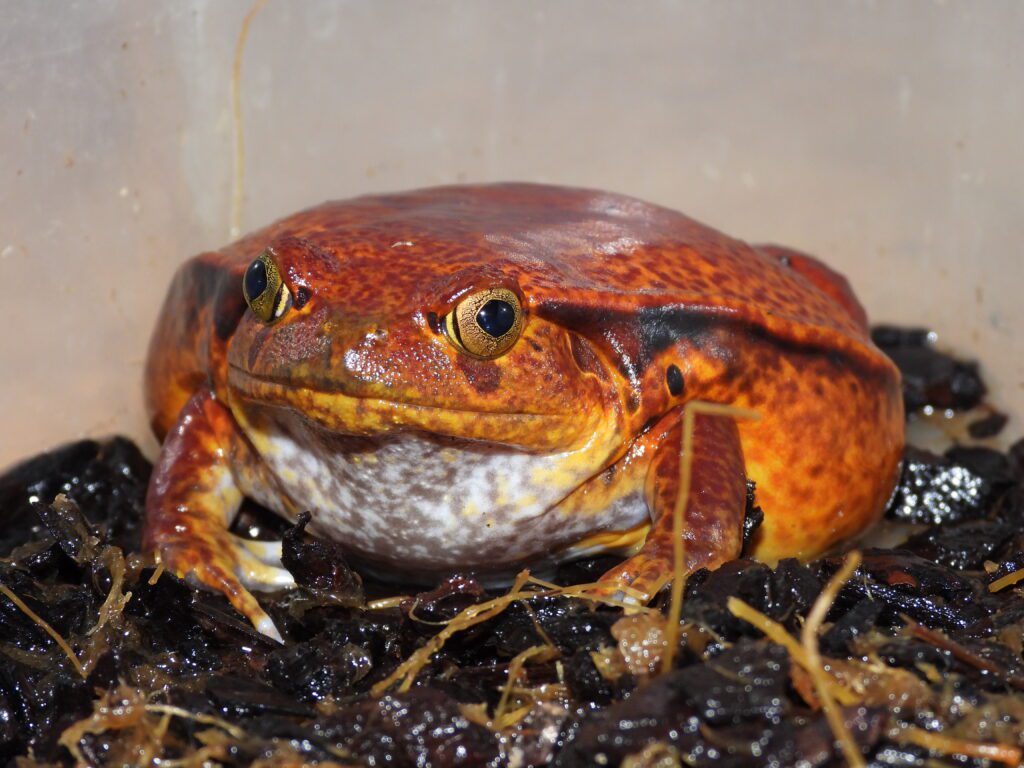
The breeding process
Misa first bred the species, without the use of hormones, in June 2023. Her first successful attempt had one pair of frogs producing 40 tadpoles. Whilst this may be an amicable start for some species, what happened next blew her away. “The second female ended up producing over 3,000 tadpoles! It was amazing to see” said Misa. “Whilst copulating, it took the female over 50 minutes to run out of eggs! We keep our frogs in huge PVC enclosures, and it was full of eggs.”
After having seemingly cracked the difficult part, Misa had to tackle the raising of tadpoles. Luckily, the water hardness in her hometown of Prague was perfect. She used tap water that had been rested for 24 hours for the entire tadpole-raising process. “A friend of mine tried this and his tadpoles died within 10 days”, warned Misa. “There are three different water suppliers in the Czech Republic. Where he lives, his water is different and we’re sure this has had a direct impact on the tadpoles. Of course, there are things he could do such as osmosis that might make the water better for the tadpoles, but I think you just need to be lucky to be in an area with good water.”
Of the 3000+ tadpoles that hatched, only one was black. It is, at the time of writing, over three months old, whereas most tadpoles metamorphose after four weeks. This unique tadpole has hind legs, but has seemingly stopped developing and could represent a rare case of neoteny in tomato frogs.
Even the average Dyscophus tadpoles have unusual feeding behaviours that must be catered for. Unlike Pacman frog tadpoles, they do not have fully-formed mouthparts and therefore cannot digest solid foods. This means the food must be crushed into a very fine powder and mixed into the water itself. Algae, pellets, flakes and meat, including other dead tadpoles, are indigestible to tomato frog tadpoles.
Misa continued: “Sometimes when you feed other tadpoles, they will go to the bottom or the top of the water towards the actual food. What Dyscophus do is they swim around and just filtrate it gradually. If a tadpole dies, it isn’t eaten, which is unusual for tadpoles.”
“We decided to buy an old coffee grinder and crush fish food into a very fine powder. It worked really well and let us raise thousands of tadpoles. Obviously, this created more issues…”
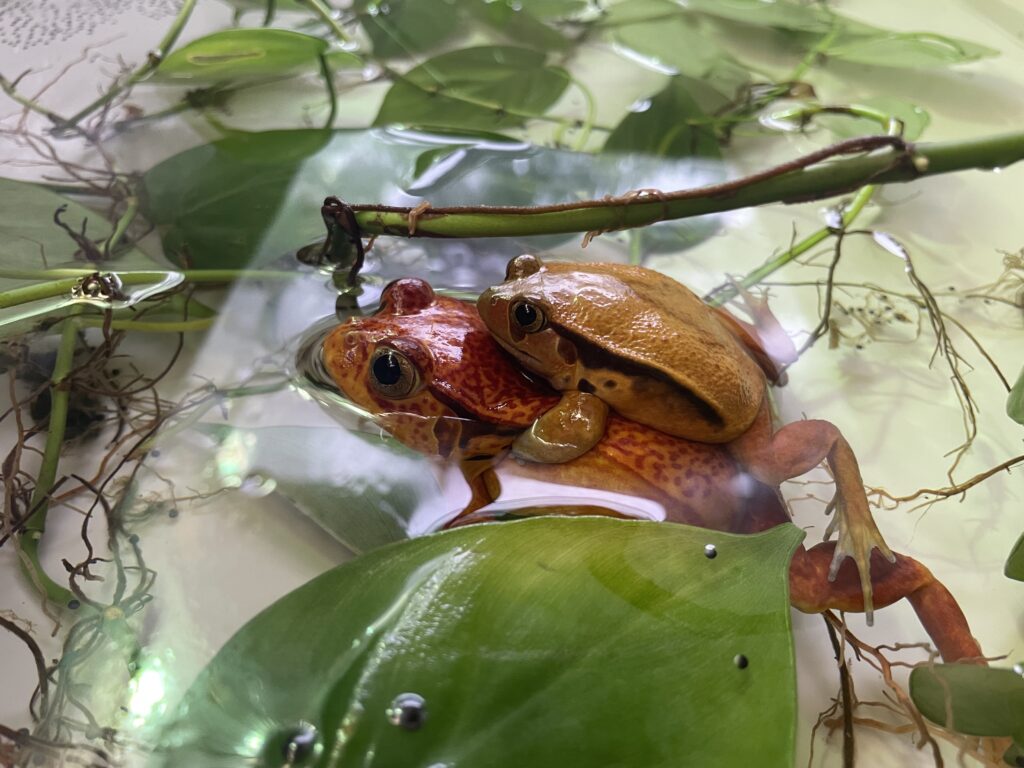
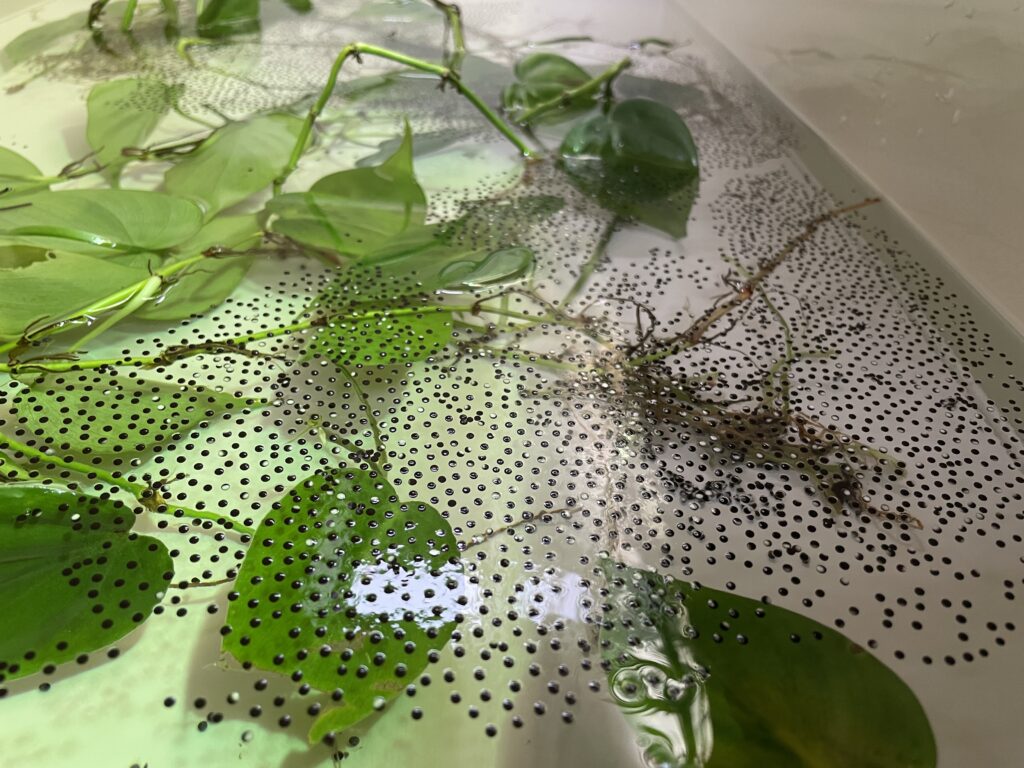
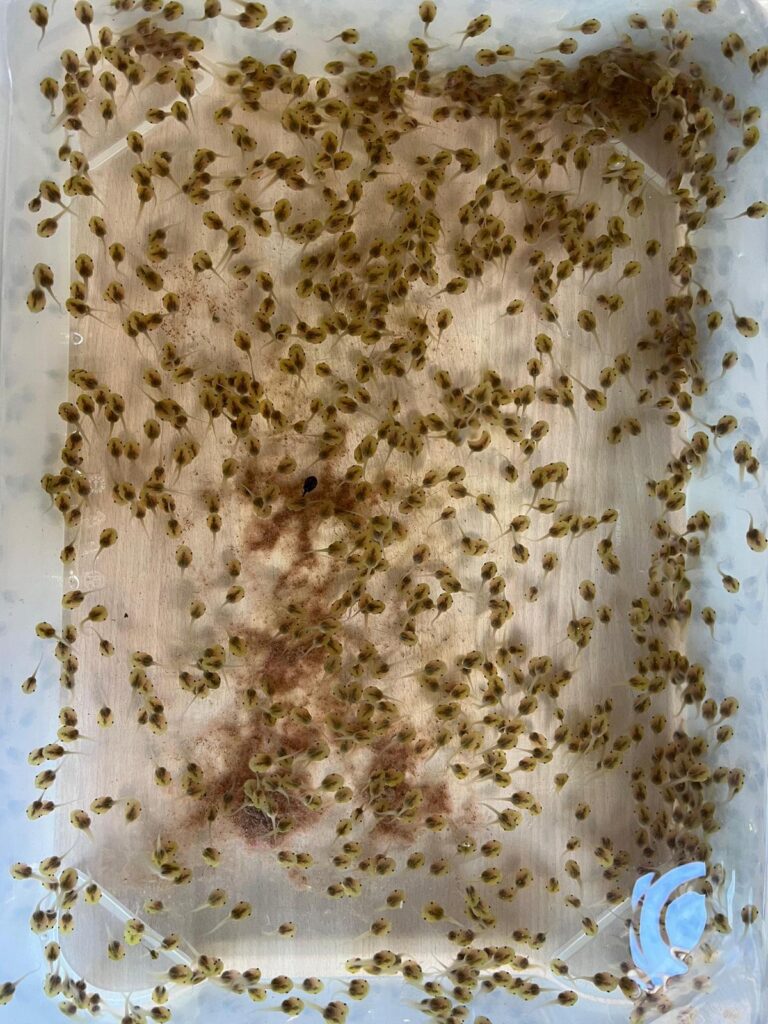
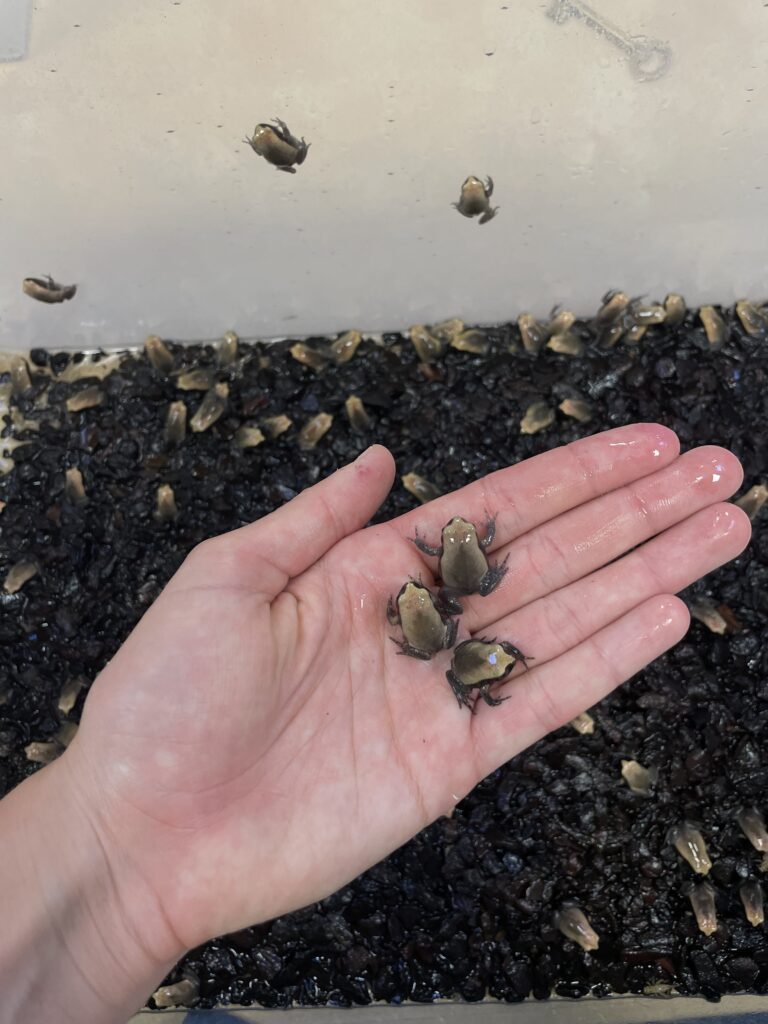
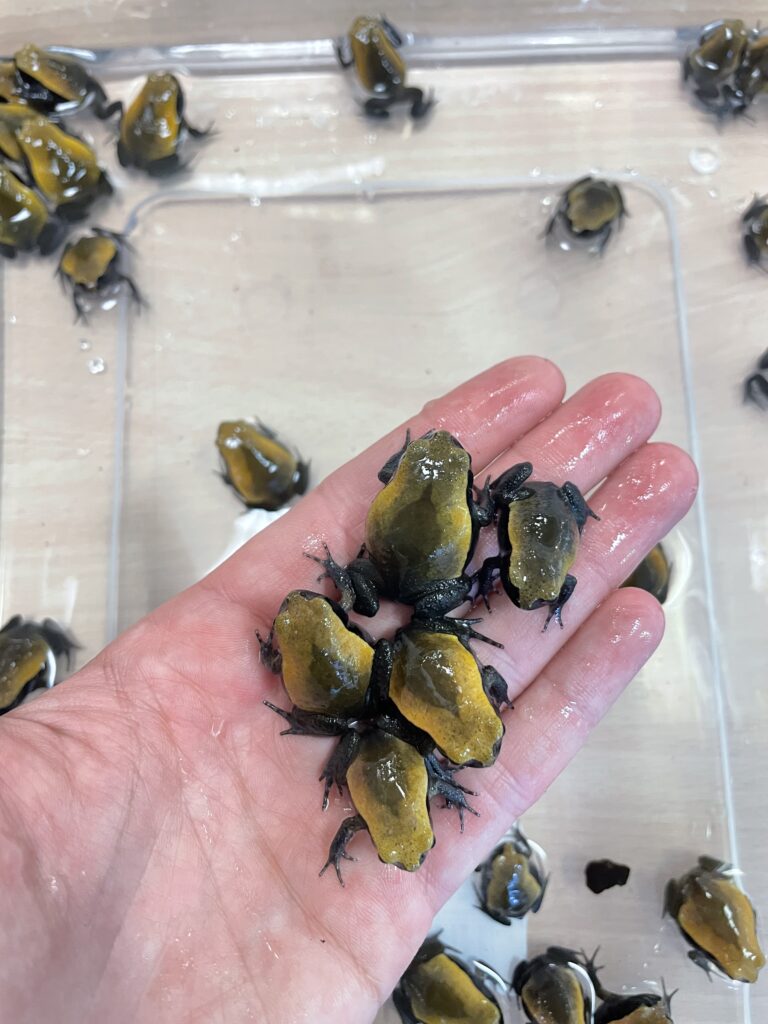
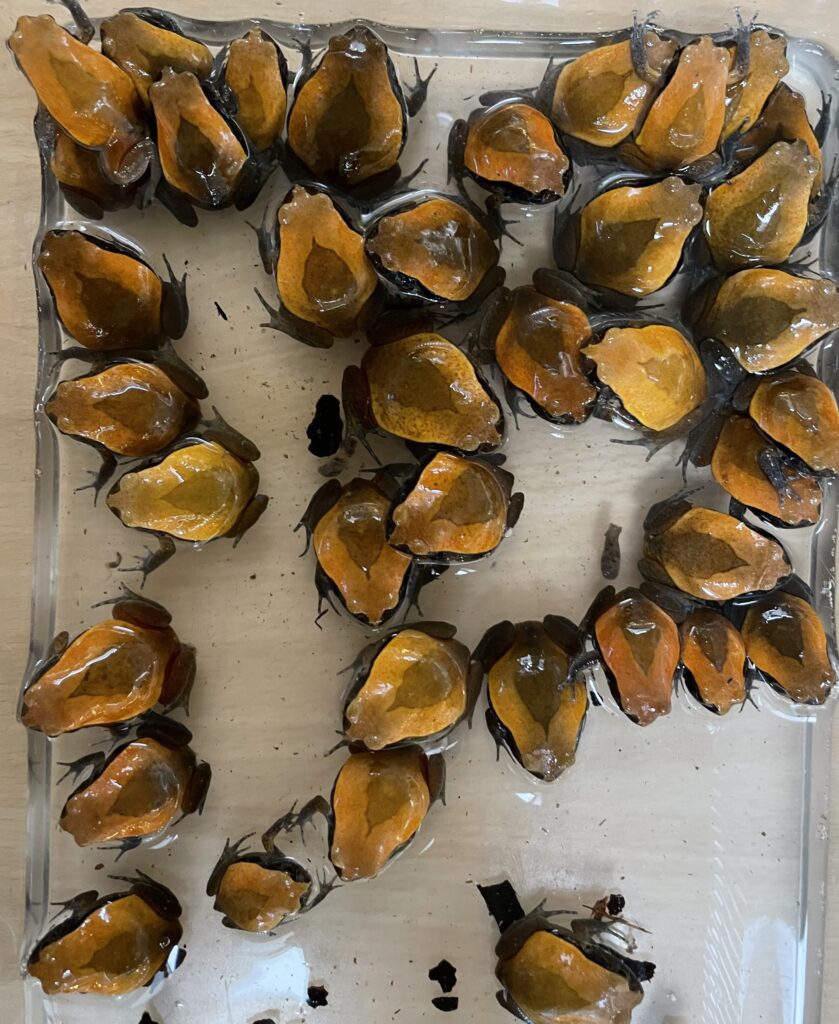
The market
Despite tomato frogs being once very popular, there are numerous challenges that breeders face when trying to move their animals to other collections. The first challenge is, of course, raising 3,000 young froglets to an age that they are appropriate to move on. Although young tomato frogs are not cannibalistic like their Pacman counterparts, they are toxic.
In the case of false tomato frogs, communally kept froglets can eventually poison one another through their skin as they develop their toxic secretions. “Young frogs tend to huddle together in groups. We found out the hard way that when they sit on each other, they become poisonous to each other. We noticed that these animals would be less active and unresponsive to turning them on their back. Now, we wash them regularly if they are housed together. There is a certain point in their development where this toxicity increases drastically. It’s super important to clean the substrate often, keep them in large enclosures that are not overcrowded and ensure the enclosure is always well-ventilated.”
Once the frogs have been successfully housed and raised, the breeder will inevitably look towards moving the animals to other collections. This can create its own challenges. False tomato frogs are CITES listed, which restricts the movement of animals into international markets. “I understand CITES is a good thing” added Misa. “But, getting the paperwork means you have to house the frogs for at least three more months than you would need to with non-CITES-listed species. It makes you think ‘Should I really do this again?’ because it’s difficult to keep thousands of frogs for that amount of time.”
“In Europe, you can quite easily find homes for a few hundred frogs, but a few thousand are just not needed. I also think amphibians tend to be less popular than reptiles. People may want three or four frogs, but there are fewer people out there looking for them.”
Misa concluded: “When I post pictures of tomato frogs, people do comment saying they haven’t seen them in years. People know them! I mean, they’re cool frogs! Big, bright red frogs, with golden eyes, they’re great. I think they have more personality than the Pacmans. It was a personal project of mine to be able to breed these frogs without hormones and I am very proud to have achieved this! Even though it’s been tough, it’s great to see more of these frogs available across the UK and Europe.”
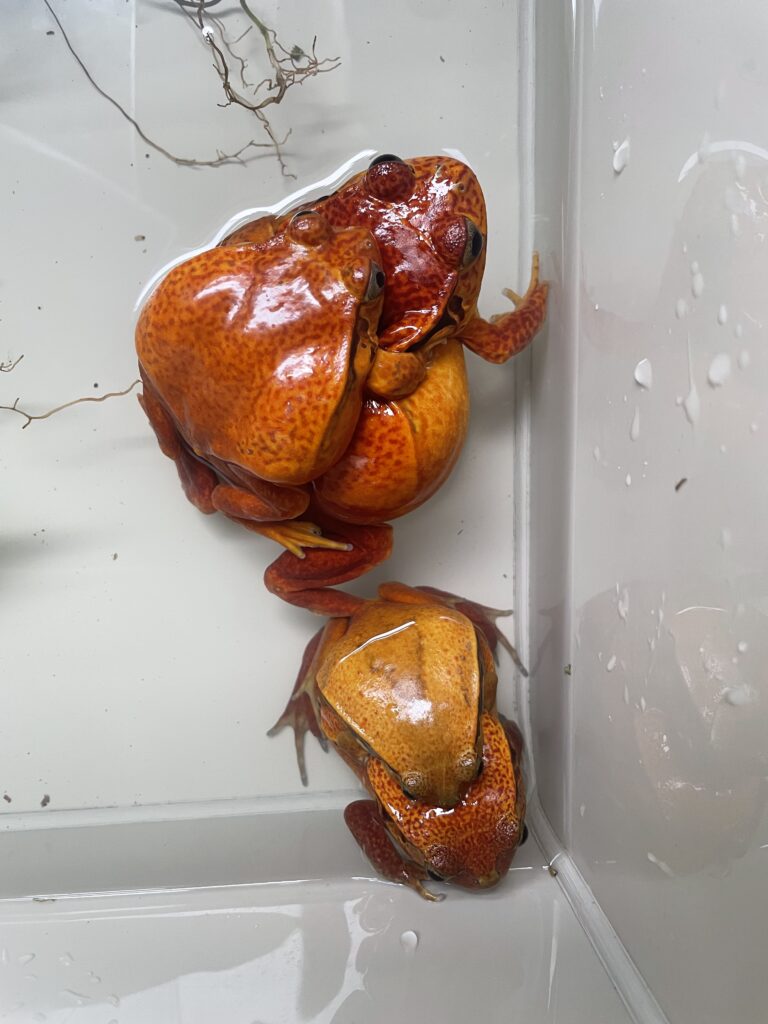
If youre interested in caring for another Madagascan species, the giant Madagascan day gecko click here.